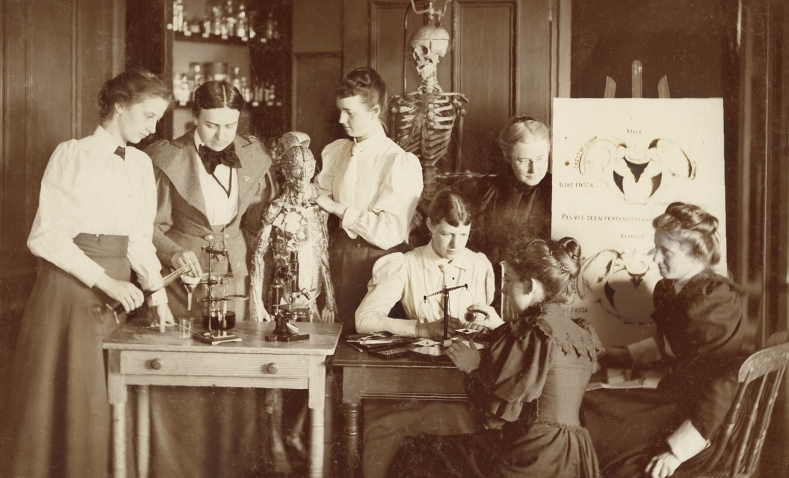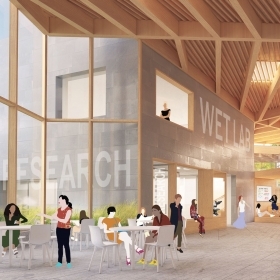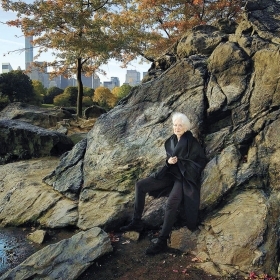An 1880s photo shows students in a College Hall lab with a skeleton used for teaching physiology. Courtesy of Wellesley College Archives
“The daily life of an archaeologist is tough work,” says McKenna Morris ’21. Translation: Working on an archaeological dig, like the one on campus last summer on the site of old College Hall, means moving literally tons of dirt and sifting through it ever so carefully. And many days, coming up with nothing.
But Morris, veteran of two archaeology classes with Elizabeth Minor ’03, Mellon Post-Doctoral Scholar in Anthropology, knows the possible rewards, too: “Nothing compares to the excitement of knowing today could be the day you uncover an amazing find.”
There was plenty of excitement last summer on Severance Hill when the dig started uncovering all kinds of objects. Not surprisingly, there was a huge amount of debris from the massive College Hall building that was destroyed by fire in 1914—a thick layer of ash with a high concentration of glass and metal debris. But students also brought up a melted glass bottle top and stopper, possibly from a bottle of chemicals; a metal label that says “447” in a decorative font; an object Morris calls “an odd stirrup-shaped piece of metal—we still don’t know exactly what it is”; and geodes and mineral samples (“spotting something sparkly amid the ash and dirt was exhilarating,” she says).
But most surprising of all were three fragments of a human skull, about the size of silver dollars. “The chances of any bone fragments being preserved are so small, and then for us to find it in that one-by-one meter square, we were amazed!” says Minor. However, there were no recorded deaths in the fire. Associate Professor of Anthropology Adam Van Arsdale, who teaches forensic anthropology, was able to provide an explanation. Saw and drill marks on the fragments identified the bones as part of an anatomical specimen used for teaching physiology.
Many of the artifacts may have been remnants of early science teaching at Wellesley. One geode had glass melted into it, and the mineral samples, including kyanite crystals, are not usually found together in nature. Minor concludes that they were samples stored in a glass case for instruction.
This fall, Minor’s Archaelogy of Material Culture class is curating an exhibit of some of the finds.







We ask that those who engage in Wellesley magazine's online community act with honesty, integrity, and respect. (Remember the honor code, alums?) We reserve the right to remove comments by impersonators or comments that are not civil and relevant to the subject at hand. By posting here, you are permitting Wellesley magazine to edit and republish your comment in all media. Please remember that all posts are public.